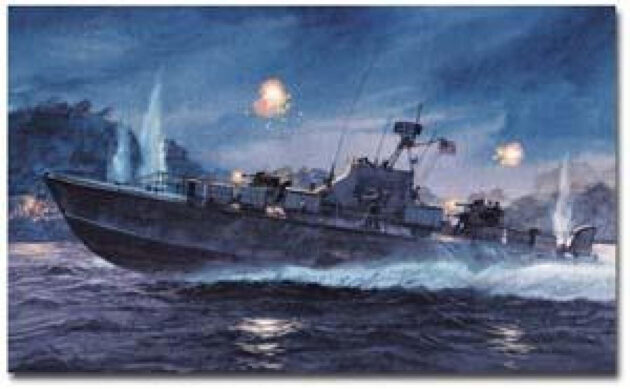A firewall existed between covert patrol-boat attacks on North Vietnamese positions and Desoto patrols eavesdropping on shore-based communications. The North Vietnamese didn’t buy the distinction; they attacked the USS Maddox.
In July 1964, Operational Plan 34A was taking off, but during the first six months of this highly classified program of covert attacks against North Vietnam, one after the other, missions failed, often spelling doom for the commando teams inserted into the North by boat and parachute.
These secret intelligence-gathering missions and sabotage operations had begun under the Central Intelligence Agency (CIA) in 1961, but in January 1964, the program was transferred to the Defense Department under the control of a cover organization called the Studies and Observations Group (SOG). For the maritime part of the covert operation, Nasty-class fast patrol boats were purchased quietly from Norway to lend the illusion that the United States was not involved in the operations.
To increase the chances of success, SOG proposed increased raids along the coast, emphasizing offshore bombardment by the boats rather than inserting commandos. In Saigon, General William C. Westmoreland, the new commander of Military Assistance Command, Vietnam (MACV), approved of the plan, and SOG began testing 81-mm mortars, 4.5-inch rockets, and recoilless rifles aboard the boats. On 30 July, Westmoreland revised the 34A maritime operations schedule for August, increasing the number of raids by “283% over the July program and 566% over June.”1 Most of these would be shore bombardment.
That very night, the idea was put to the test. Under cover of darkness, four boats (PTF-2, PTF-3, PTF-5, and PTF-6) left Da Nang, racing north up the coast toward the demilitarized zone (DMZ), then angling farther out to sea as they left the safety of South Vietnamese waters.2 About five hours later they neared their objective: the offshore islands of Hon Me and Hon Nieu.


Leave a Reply
You must be logged in to post a comment.